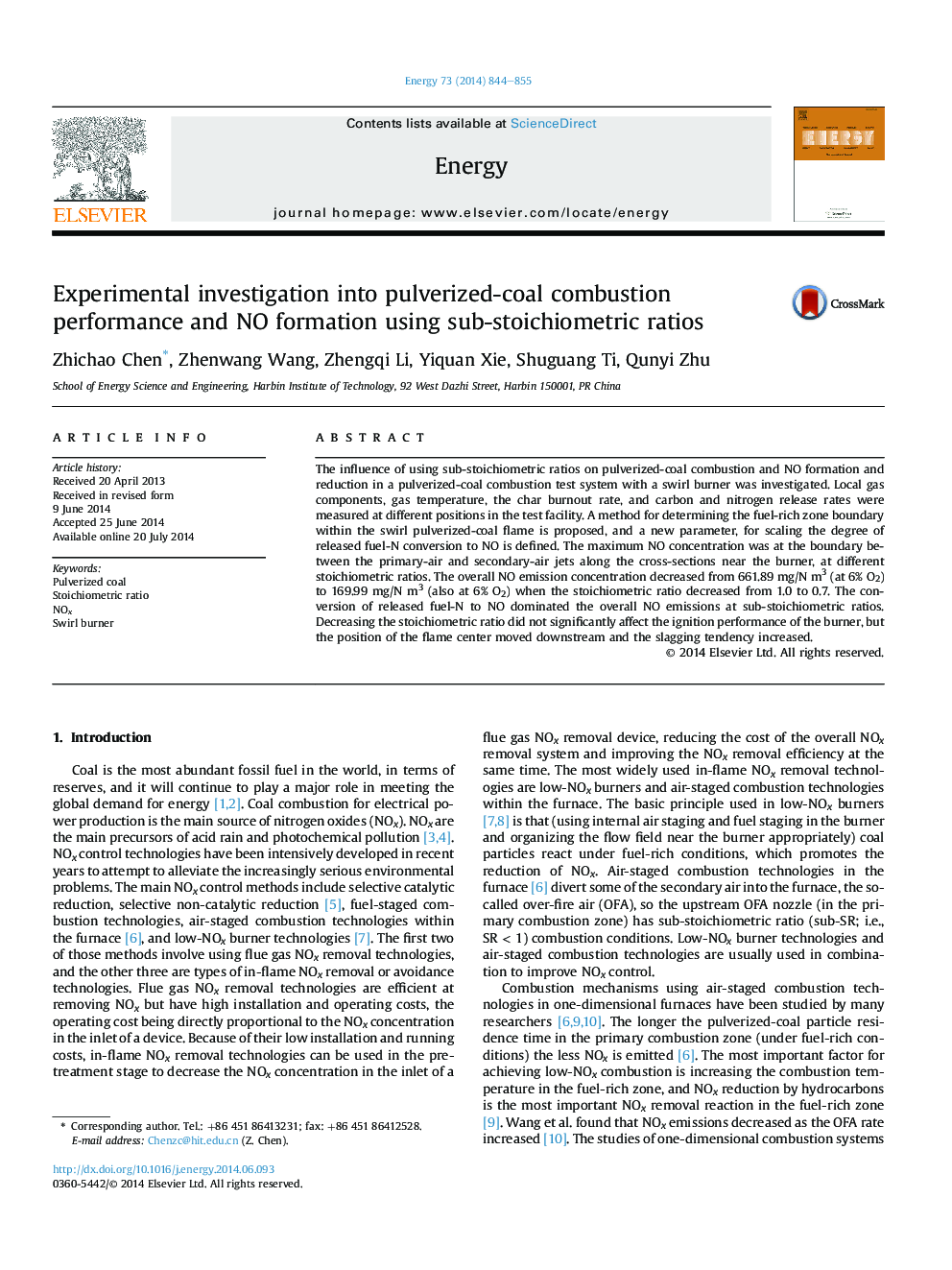| Article ID | Journal | Published Year | Pages | File Type |
|---|---|---|---|---|
| 8077161 | Energy | 2014 | 12 Pages |
Abstract
The influence of using sub-stoichiometric ratios on pulverized-coal combustion and NO formation and reduction in a pulverized-coal combustion test system with a swirl burner was investigated. Local gas components, gas temperature, the char burnout rate, and carbon and nitrogen release rates were measured at different positions in the test facility. A method for determining the fuel-rich zone boundary within the swirl pulverized-coal flame is proposed, and a new parameter, for scaling the degree of released fuel-N conversion to NO is defined. The maximum NO concentration was at the boundary between the primary-air and secondary-air jets along the cross-sections near the burner, at different stoichiometric ratios. The overall NO emission concentration decreased from 661.89Â mg/NÂ m3 (at 6% O2) to 169.99Â mg/NÂ m3 (also at 6% O2) when the stoichiometric ratio decreased from 1.0 to 0.7. The conversion of released fuel-N to NO dominated the overall NO emissions at sub-stoichiometric ratios. Decreasing the stoichiometric ratio did not significantly affect the ignition performance of the burner, but the position of the flame center moved downstream and the slagging tendency increased.
Related Topics
Physical Sciences and Engineering
Energy
Energy (General)
Authors
Zhichao Chen, Zhenwang Wang, Zhengqi Li, Yiquan Xie, Shuguang Ti, Qunyi Zhu,
